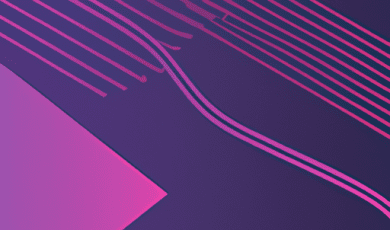
The Adobe Summit 2025 has just wrapped up, setting the stage for the next evolution in design and digital communication. As one of the most anticipated events in the world of creative technology, Adobe Summit brought together designers, marketers, communicators, and thought leaders from around the globe to share innovations, trends, and strategies shaping the industry’s future.
This year’s Summit was not just about the latest Adobe product updates, although there were plenty of those, it was a deep dive into how technology, creativity, and communication are converging. In this blog post, we‘ll break down the major revelations from Adobe Summit 2025 and explore what they mean for the future of design and digital communication.
Main Highlights from Adobe Summit 2025
1. Generative AI: The Creative Partner, Not the Replacement
Artificial intelligence was, unsurprisingly, the star of the show. Adobe unveiled significant updates to its suite of generative AI tools, including Firefly 4.0 and new advancements in Sensei. But the Summit’s message was clear: AI is here to augment the creative process, not replace the designer.
Keynote speakers demonstrated how designers are collaborating with AI to accelerate ideation, automate repetitive tasks, and bring even more ambitious visions to life. From automatically generating complex layouts to suggesting color palettes tailored to your brand persona, Adobe’s AI tools are more intuitive and flexible than ever. The future, according to Adobe, is “human creativity empowered by machine intelligence.”
2. Real-Time Collaboration Goes Mainstream
Collaboration emerged as a central theme at Adobe Summit 2025. With remote and hybrid work now the norm across industries, Adobe introduced major updates to Creative Cloud’s collaborative features. Live co-editing in Photoshop and Illustrator, real-time feedback and versioning in XD, and seamless project syncing across devices are set to become essential workflows for design teams in 2025 and beyond.
These updates aim to break down geographical barriers, allowing global teams to co-create, iterate, and launch digital experiences faster than ever before. Whether you’re a designer in New York working with a developer in Singapore, Adobe’s cloud-powered collaboration features ensure your creative process is never interrupted.
3. Multisensory Experiences: Beyond the Visual
The Adobe Summit 2025 devoted significant attention to multisensory digital communication. Key sessions explored how the blending of audio, video, animation, touch, and interactivity can create richer, more engaging audience experiences. Adobe previewed new tools for immersive content—think AR/VR design kits—and highlighted the critical role of accessibility in multisensory design.
Designers were challenged to think beyond the screen: How can sound, haptics, and even AI-driven personalization drive deeper emotional connections between creators and their audiences? These insights are shaping a future where communication isn’t just seen and read, but felt and experienced.
4. Personalization at Scale: The Future of Brand Communication
In a world of infinite content, personalization is no longer a competitive edge—it’s an expectation. The 2025 Summit showcased advances in Adobe Experience Cloud that empower brands to deliver hyper-personalized content to the right audience, at the right time, across every channel. AI-driven audience segmentation, real-time content adaptation, and advanced analytics make it possible to tailor every digital touchpoint.
Brands that master personalization will stand out in the crowded digital marketplace. The message from Adobe: Data and creativity must work hand-in-hand to drive truly meaningful communication.
5. The Ethical Imperative: Responsible Design and Communication
One of the most important discussions at this year’s Summit centered around ethical design and responsible communication practices. As AI takes on a larger role in content creation, Adobe reinforced its commitment to transparency, copyright protection, and bias mitigation. The Adobe Content Authenticity Initiative (CAI) continues to expand, providing creators and audiences with new ways to verify the origins and authenticity of digital works.
Thought leaders urged designers and communicators to prioritize diversity, inclusivity, and accessibility in their work. In the age of AI and mass automation, audiences value authenticity and trust above all.
In-Depth: What These Trends Mean for Designers and Communicators
With the latest announcements from Adobe Summit 2025, the future of digital design and communication is looking more collaborative, data-driven, and human-centered than ever. Here’s how each revelation can impact your daily workflow—and your long-term strategic vision.
Embracing AI as a Creative Ally
For designers, the new generation of generative AI tools means spending less time on repetitive tasks and more time on big-picture strategy and innovation. Digital communicators can use AI-powered copywriting and content generation to rapidly create targeted messaging for different platforms and audiences.
However, the key is to wield AI responsibly. The most impactful work will come from creators who use AI as a springboard for unique, authentic human expression, not as a shortcut to mass-produced content.
Leveraging Real-Time Collaboration
Remote work isn’t going anywhere—and neither is the demand for seamless team collaboration. The new tools previewed at Adobe Summit place high value on real-time input, transparency, and easy file management. Distributed teams can expect to move faster, reduce miscommunication, and deliver cohesive brand experiences. For agencies and in-house teams alike, adopting cloud-first collaboration will be crucial to future-proofing your workflow, much like upgrading from legacy systems.
For agencies and in-house teams alike, adopting cloud-first collaboration will be crucial to future-proofing your workflow.
Designing for Multisensory Engagement
The future of digital communication isn’t flat. Whether through interactive AR campaigns, dynamic animations, or inclusive design for visually-impaired audiences, multisensory experiences are becoming a staple of effective communication strategies. Designers who develop skills in video editing, sound design, and immersive media will be well-positioned to lead in this new era of digital content, similar to how access control has evolved into a multi-layered experience in security.
Designers who develop skills in video editing, sound design, and immersive media will be well-positioned to lead in this new era of digital content.
Championing Personalization
As audiences expect relevant, tailored experiences, communicators must learn to leverage data insights at every stage of the creative process. Advanced segmentation and real-time testing allow for more meaningful connections and greater ROI on creative campaigns. The lesson from Adobe Summit: Don’t be afraid of the dat, embrace it as a key ingredient in your creative recipe, much like integrating biometric clocks into modern workplaces.
Prioritizing Ethics and Authenticity
As AI-generated content proliferates and design workflows become increasingly automated, audiences are demanding greater transparency. Tools like digital watermarking and verification, introduced in the Content Authenticity Initiative, help maintain trust and authenticity.
Remember: The best design and communication serve not just brands or campaigns, but real people. Ethical considerations should be at the forefront of every project, paralleling the growth of security technology in balancing efficiency with responsibility.
Conclusion: Preparing for the Next Chapter in Design and Communication
Adobe Summit 2025 has delivered a clear message: The future of design and digital communication is bold, collaborative, and deeply human-centric. As we embrace rapid technological changes, especially in AI, real-time collaboration, multisensory experiences, personalization, and ethical design, professionals in communication and design have more tools than ever to connect, inspire, and empower global audiences.
For creative teams, agencies, and design enthusiasts, staying on top of these trends isn’t just about adopting new technologies, it’s about reimagining what’s possible in the world of digital communication. The next wave of innovation will belong to those who can harness technology thoughtfully while keeping people and authentic storytelling at the heart of every project.
Looking forward, Adobe Summit 2025 sets the pace for a future where creativity and communication know no boundaries. Whether you’re a seasoned designer, a digital marketer, or a communication strategist, there’s never been a more exciting time to be a part of this dynamic and evolving industry.








